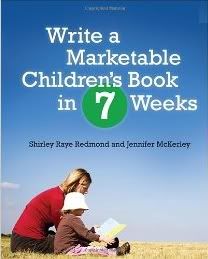By now many of you have seen the New York Times' article from last month: Picture Books No Longer a Staple for Children. It's caused quite a stir in the book writing community, in particular (not surprisingly) among picture book writers and illustrators. Newbery Honor-winning illustrator Marla Frazee spoke at Pittsburgh's Fall Festival of Children's Books and said, “The reporter should have talked to teachers and librarians who are in the trenches with kids. They understand that picture books are crucial rungs on the ladder to literacy.”
She's right about picture books being crucial to building literacy skills, but I don't think the reporter was disputing that. In fact, the article quotes several booksellers and publishers who underscore the role picture books play in learning to read and comprehend stories. To me, the article highlighted three reasons picture book sales are down:
The economy. Picture books are expensive to produce, and expensive to buy.
The booming young adult market. Publishers and booksellers go where the money is: YA. That's just a fact of the business when you have finite dollars and shelf space.
Parents. To me, this is the most alarming reason. Parents are pushing their children to read at an earlier age, moving kids as young as four years old from picture books to chapter books.
Easy readers are great. Chapter books are wonderful. But is it necessary to rob young children of the pleasure of being read a picture book (not to mention the joy of gazing at extraordinary illustrations while hearing a compelling story) before they're ready to move on? Picture book plots are far more complex than easy readers, and their vocabulary and sentence structure is close to that of chapter books. Kids are learning from these books, and not getting stressed out in the process.
It seems to me that authors, illustrators and booksellers need to band together and work to educate well-meaning parents on the literary value of picture books. If you're doing a book signing, mention how kids can learn to follow a plot and expand their vocabulary when they're hearing your story read out loud. When you're speaking at schools, ask teachers to use your book as part of their literacy curriculum. Blog about it, put this information on your web sites. Create a grassroots, pro-picture book publicity campaign. Parents want to love picture books, and if you give them reasons to keep buying them even after their kids start reading on their own, they'll do it. For the authors, illustrators and booksellers, it's essential that you start talking up these reasons now.
Interested in learning how to write a book and send it to children's book publishers? Come on over to The CBI Clubhouse for audios, videos, insider writing tips and much, much more!

